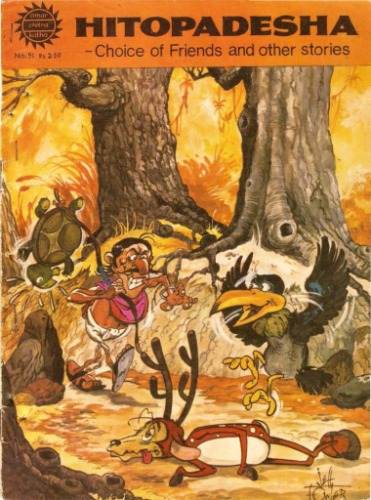- 2 402 202 книги
- Поиск
libcats.org










Главная →
Leadership and Motivation: The Fifty-Fifty Rule and the Eight Key Principles of Motivating Others
Leadership and Motivation: The Fifty-Fifty Rule and the Eight Key Principles of Motivating Others
John AdairThis book is about leadership and motivation, and how both promote or demote creativity. It defines a leader as someone who has personal qualities and technical knowledge that, under a given situation, permit him or her to perform successfully a requisite function. The leader motivates people to follow him/her because everyone involved stands to gain. Everyone wins because the strategic and operational levels of the group "work harmoniously together as the organization's leadership team" (p.33).
Creativity activities, like innovations, depend on motivation, and hence the 50-50 rule. The rule states that "50% of motivation comes from within a person and 50% from his or her environment, especially from the leadership encountered there" (p.). From here the book describes two psychological theories of motivation: Maslow's theory and Herzberg's theory. Maslow's theory holds that motivation depends on physiological, safety, social, esteem, and self-actualization needs. The more basic (biological) the needs, the easier it is to motivate a person from without. The higher level the needs, such as self-actualization, the more motivation must come from within a person.
For Herzberg creative efforts are like work. As with work motivation is determined by the satisfaction of people's higher needs. A safe working environment is often a stronger motivator than a high salary. Nice stuff.
The last parts of the book outline eight principles on "how to motivate others", beginning with the enthusiasm of the motivator. I resist the temptation to describe all the principles for fear of spoiling your reading of the book. Suffice to say the book is impressive. It is well organized. Each chapter has a "Key Points" section. Chapters also start and end with a memorable quotation from motivational leaders of all kinds. A very good book, indeed!
Amavilah, Author
Modeling Determinants of Income in Embedded Economies
Creativity activities, like innovations, depend on motivation, and hence the 50-50 rule. The rule states that "50% of motivation comes from within a person and 50% from his or her environment, especially from the leadership encountered there" (p.). From here the book describes two psychological theories of motivation: Maslow's theory and Herzberg's theory. Maslow's theory holds that motivation depends on physiological, safety, social, esteem, and self-actualization needs. The more basic (biological) the needs, the easier it is to motivate a person from without. The higher level the needs, such as self-actualization, the more motivation must come from within a person.
For Herzberg creative efforts are like work. As with work motivation is determined by the satisfaction of people's higher needs. A safe working environment is often a stronger motivator than a high salary. Nice stuff.
The last parts of the book outline eight principles on "how to motivate others", beginning with the enthusiasm of the motivator. I resist the temptation to describe all the principles for fear of spoiling your reading of the book. Suffice to say the book is impressive. It is well organized. Each chapter has a "Key Points" section. Chapters also start and end with a memorable quotation from motivational leaders of all kinds. A very good book, indeed!
Amavilah, Author
Modeling Determinants of Income in Embedded Economies
Скачать книгу бесплатно (pdf, 5.33 Mb)
Читать «Leadership and Motivation: The Fifty-Fifty Rule and the Eight Key Principles of Motivating Others»
Читать «Leadership and Motivation: The Fifty-Fifty Rule and the Eight Key Principles of Motivating Others»
EPUB | FB2 | MOBI | TXT | RTF
* Конвертация файла может нарушить форматирование оригинала. По-возможности скачивайте файл в оригинальном формате.
Популярные книги за неделю:

Проектирование и строительство. Дом, квартира, сад
Автор: Петер Нойферт, Автор: Людвиг Нефф
Размер книги: 20.83 Mb

Система упражнений по развитию способностей человека (Практическое пособие)
Автор: Петров Аркадий НаумовичКатегория: Путь к себе
Размер книги: 818 Kb

Сотворение мира (3-х томник)
Автор: Петров Аркадий НаумовичКатегория: Путь к себе
Размер книги: 817 Kb

Радиолюбительские схемы на ИС типа 555
Автор: Трейстер Р.Категория: Электротехника и связь
Размер книги: 13.64 Mb
Только что пользователи скачали эти книги:

Jordan, Robert - [Wheel Of Time 02] - The Great Hunt [LIT]
Автор: Jordan Robert
Размер книги: 636 Kb

Metallic Multilayers and their Applications, Volume 4: Theory, Experiments, and Applications related to Thin Metallic Multilayers
Автор: Gayanath Fernando, Автор: Prasanta Misra B.Sc (Hons) and M.Sc in Physics (Utkal University Bhubaneswar India) Ph.D. in Physics (Tufts University Medford U.S.A.) Post-Doctoral Research in Solid State Physics (University of Texas Austin U.S.A.)
Размер книги: 4.90 Mb

Understanding Voice over IP Security (Artech House Telecommunications Library)
Автор: Alan B. Johnston, Автор: David M. PiscitelloКатегория: Компьютеры, Сети
Размер книги: 3.42 Mb

Unity, Truth and the Liar: The Modern Relevance of Medieval Solutions to the Liar Paradox (Logic, Epistemology, and the Unity of Science, 8)
Автор: Shahid Rahman, Автор: Tero Tulenheimo, Автор: Emmanuel GenotКатегория: Математика, Математическая логика
Размер книги: 3.14 Mb

East Asian welfare regimes in transition: From Confucianism to globalisation
Автор: Alan Walker, Автор: Chack-Kie Wong
Размер книги: 910 Kb

Amar Chitra Katha - Hitopadesha: Choice of Friends and other stories
Автор: Anant Pai
Размер книги: 5.54 Mb



